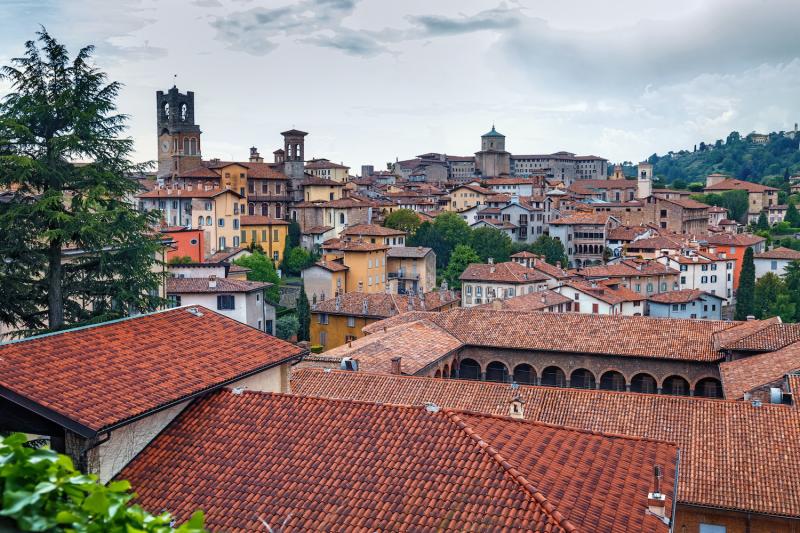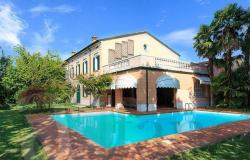Bergamo became a household name in the first months of the coronavirus pandemic, when the Lombard town and surrounding area were the European epicenter of the first deadly wave. Leaving aside that grim legacy, this lovely city at the foot of the Orobie Alps, 40 km (25 mi) northeast of the regional capital of Milan, has plenty to offer, whether you stay for a day or longer to explore the surroundings.
Bergamo has two sections: Città Alta, the old walled town on top of a hill, and the modern part in the plains right below. If you only have a day, stick to the upper section, which we suggest you reach by taking the funicular, rather than the bus, for a more spectacular entrance into the old city.
The funicular has connected the modern center of Bergamo to the medieval heart for 120 years, crossing the ancient Venetian walls that protected the city from enemy attacks and offering superb views along the way.
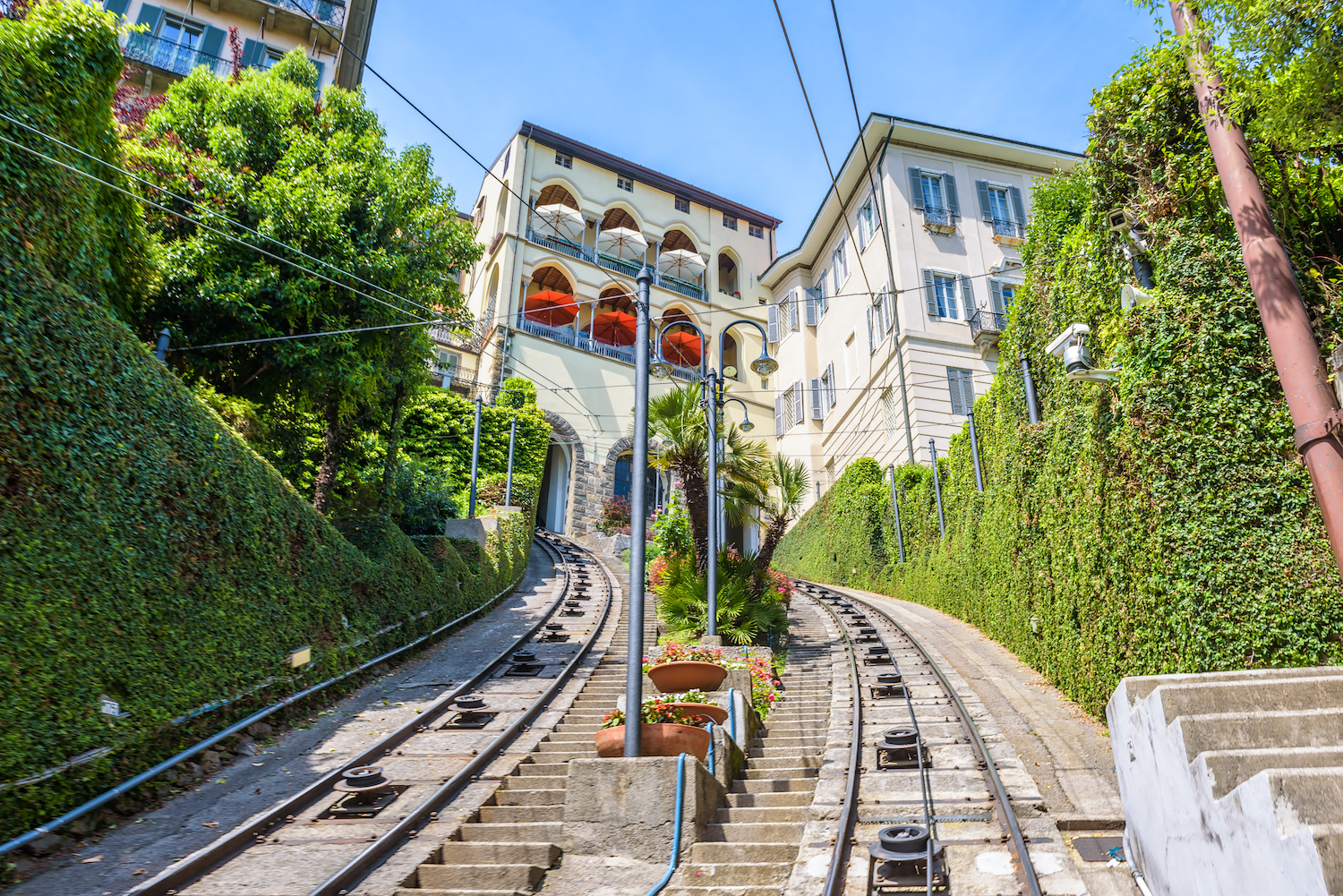
Start your visit by walking around the perfectly preserved Venetian walls to admire a vast panorama that goes from the Città Bassa to the Lombard plains below, all the way to Milan and the Apennine Mountains on a clear day. Built starting in 1561 by the Republic of Venice, the UNESCO-inscribed walls were actually never needed as the city was spared from sieges. They consist of 14 bulwarks, two platforms, 100 openings for guns, two powder kegs, four gates, plus an intricate underground world of passages and tunnels. More than 250 buildings were demolished to build the walls; some of them were religious buildings, hence the eight excommunications inflicted during the works.
Piazza Vecchia is the ancient core of the city, and today it still is the place where the Bergamaschi meet and mingle. Several ancient palaces, arranged harmoniously, overlook the square, including the 12th-century Palazzo della Ragione, which was the administrative seat of Bergamo in medieval times. The palazzo features the Lion of Saint Mark on its facade, testifying to the long period of Venetian rule.
For a breathtaking view of the ancient city, climb the 230 steps (or take the elevator) of the 53-meter-high Civic Tower, or Campanone, home to the largest bell in Lombardy. Make sure you come back just before 10 pm to experience a tradition that goes back to Venetian rule: every evening at 10, the bell strikes 100 times. In medieval times, this warned the citizens of the closing of the gates and beginning of the curfew.
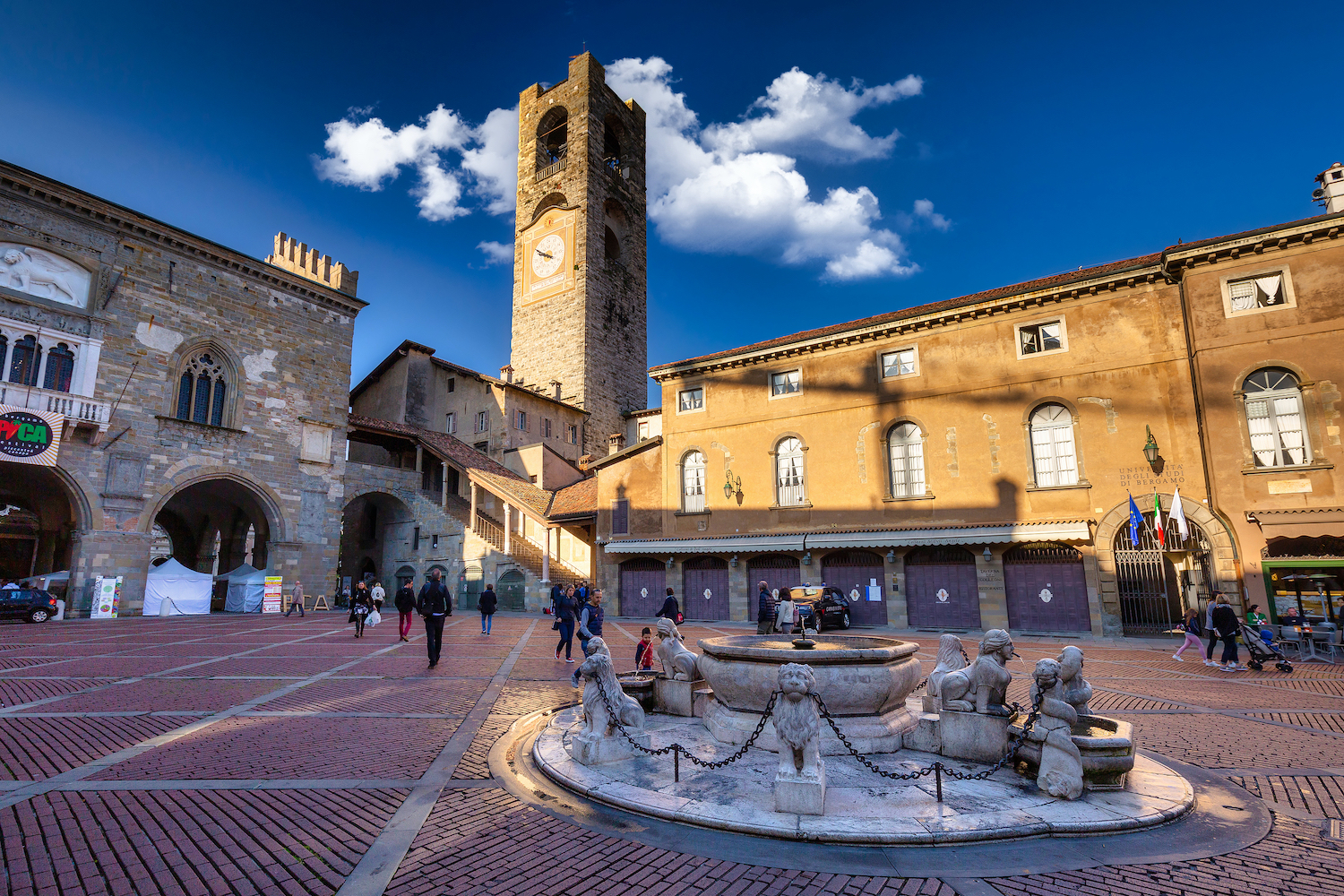
On the opposite side of the square stands the Palazzo Nuovo, with its imposing white marble facade. Today, it is the seat of one of Italy’s most important libraries, the Angelo Mai Library, with its precious collection of incunabula, 16th-century prints, manuscripts and other books of great value. Peek inside the Tassiana room to see the magnificent globes by Vincenzo Maria Coronelli, cosmographer of the Republic of Venice. They date back to the late 1600s, have a circumference of almost 3.5 meters and are made with 50 illustrated sheets.
At the center of the square stands the Contarini Fountain, donated to Bergamo by the podestà Alvise Contarini, who administered the city on behalf of Venice. When it was built, it served as a water reserve for domestic use. Around its basin are statues of sphinxes spilling water, snakes and lions, symbol of La Serenissima.
The monumental heart of the city is Piazza Duomo, with the Cathedral, the Basilica of Santa Maria Maggiore, the Colleoni Chapel and the Baptistery.
Perhaps start by performing a lucky rite apparently recommended by the local nonne: and that is to “touch Colleoni's balls”. According to legend, the three shiny symbols depicted on the coat of arms displayed on the gate of the Colleoni Chapel are Bartolomeo Colleoni’s testicles. And it is said that rubbing them brings good luck (up to you if you want to give it a try). The Colleoni Chapel was built to house the tomb of Bartolomeo Colleoni, the intrepid condottiero born near Bergamo who became captain-general of the Republic of Venice. It is one the most impressive buildings in Bergamo. Its facade, decorated with red and white marble, is a masterpiece of the Italian Renaissance; its interiors are just as striking, with many works of art that include the equestrian statue of Colleoni, and sarcophagi entirely inlaid in marble.
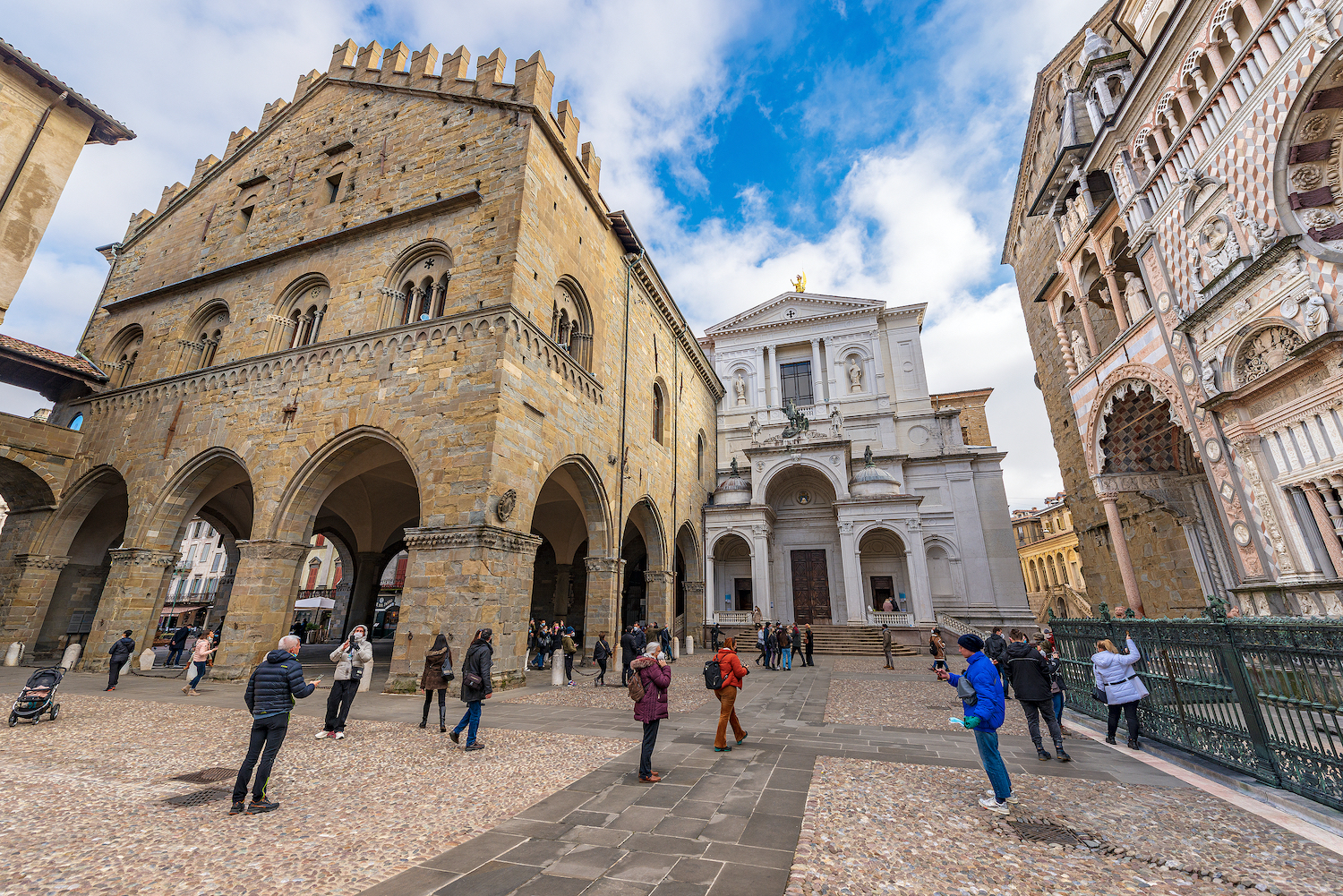
No less interesting is the Basilica of Santa Maria Maggiore, whose austere Romanesque exterior contrasts with the Baroque opulence inside (the result of a 17th-century intervention - the original church was erected in 1137). The imposing basilica, the most beloved church by the people of Bergamo, was built as a vow to the Virgin Mary, after the citizens asked for her protection as a terrible plague epidemic swept across northern Italy. The Basilica lacks a central entrance as the facade formed a single wall with the adjacent building, thus the four entrances to the church are on the sides.
After such a big intake of art, history, and culture, you may want to rest for lunch. Stop at a local trattoria to try the traditional casoncelli, fresh half moon-shaped ravioli, filled with dry bread, Grana Padano cheese, meats, amaretti, pear and herbs, served with melted butter, bacon, garlic, sage and grated cheese.
In the afternoon, you can spend some time browsing the many historic shops that line via Corsarola; here, on the main street of the Città Alta, you won't find international chain stores, bur rather artisan’s workshops and independent shops where to buy clothing, accessories and souvenirs, alongside the Bergamaschi, who also come here for shopping. Then just wander around the streets of the historic center to come upon hidden medieval corners, frescoed facades, fountains and arcaded passages.
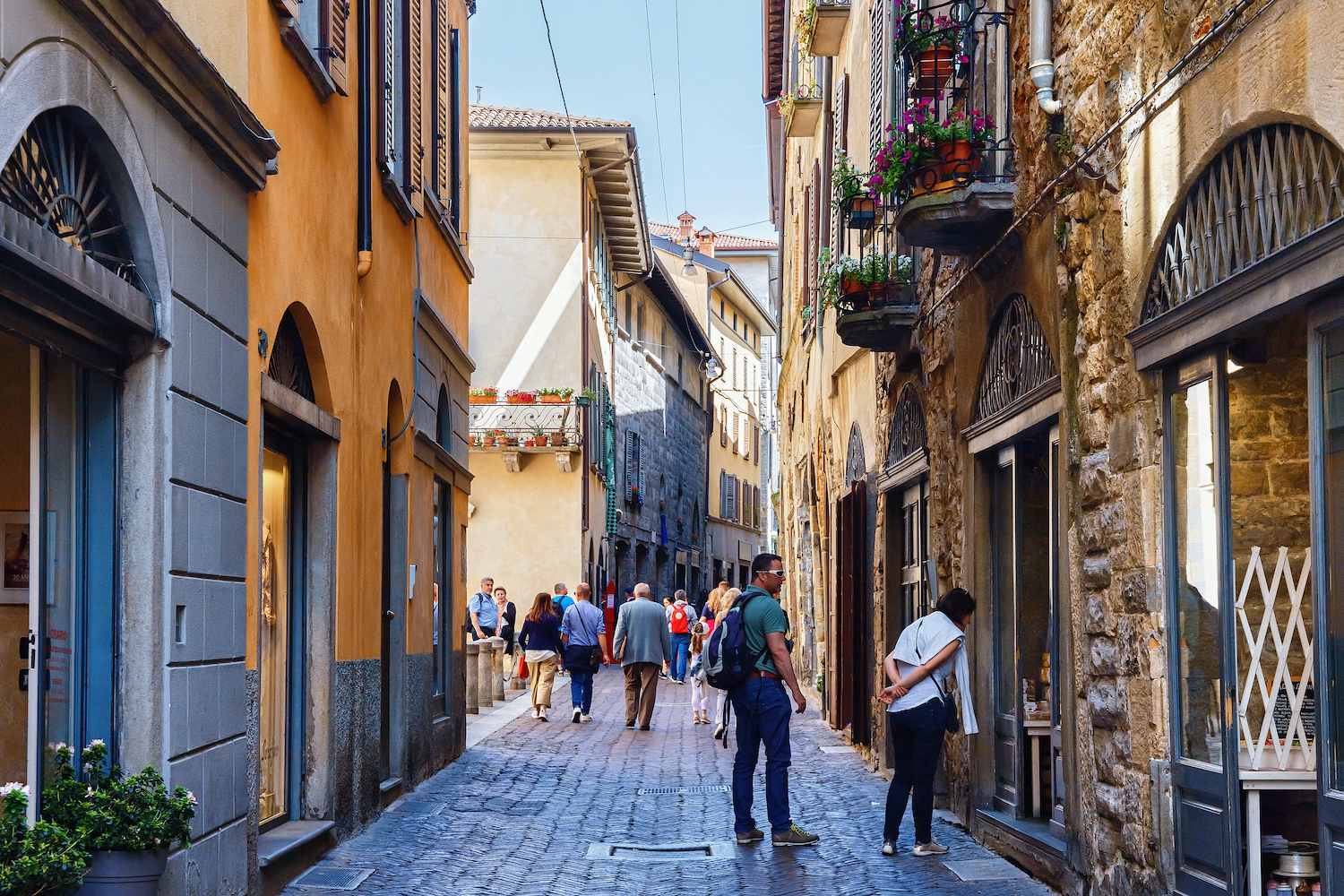
Come mid-afternoon, it’s time for gelato! Did you know that the stracciatella flavor was invented in Bergamo? A favorite with all Italian kids, this panna (cream) with dark chocolate chunks delight was created at La Marianna in 1961, so head to this historic gelateria to find out how they came up with the idea. Its position, just inside the Venetian walls that surround Bergamo Alta, overlooks the scenic spot known as “Colle Aperto”; right in front is the Adalberti tower, better known as the “tower of hunger,” where those guilty of tax fraud were imprisoned during the Venetian domination.
If you’re into aperitivo, Bergamo will not disappoint. Head to Bergamo Bassa and start your evening at Piazza Pontida, where delicious buffets and DJ sets await. Continue to Borgo Santa Caterina, where bars and live music venues abound. Via Borgo Santa Caterina is lined with offbeat design shops and comes to life after dark as students from the University of Bergamo join young crowds at nightclubs, glitzy cocktail bars, and microbreweries.
For more information and to plan your visit, check the Bergamo tourism website.
